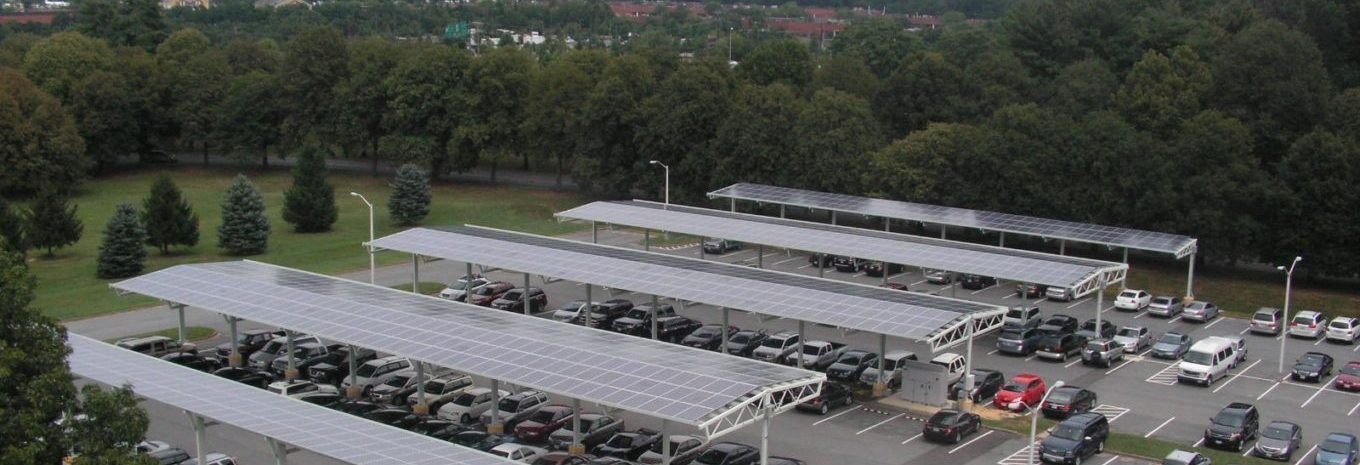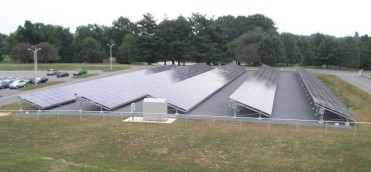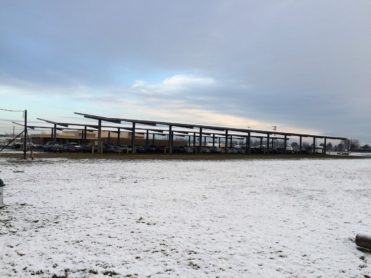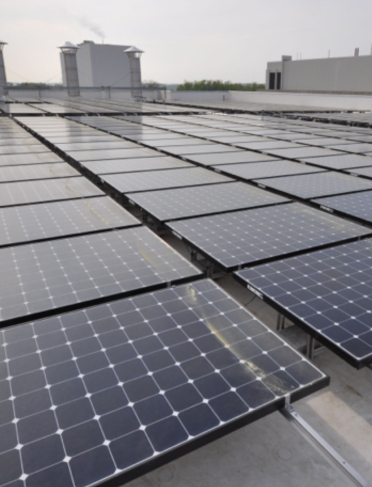
-
Multiple Solar Systems – National Institute of Standards and Technology (NIST)
Ground mounted solar system at NIST providing renewable energy to the Advanced Measurement Laboratory
This 247 kW ground mount system was built using a fixed-tilt rack structure and concrete foundations. Legatus6 encountered poor soil condition at the required footer depth and employed a testing agency to certify the bearing capacity for each set of foundations to ensure no shifting would occur over time. The Maryland Department of the Environment has very stringent requirements for mitigating storm water run-off. Consequently there was a heavy site component for this portion of the project that required three storm-water bio-retention areas totaling 3400 square feet of surface area and storm-water connections 17 feet below grade. Legatus6 managed these challenges while completing the ground mount system (and the entire project) on schedule.
-
National Aeronautics and Space Administration (NASA)
1,750 kW Ground-Mounted Solar System
Project Customer: NASA – Kennedy Space Center, Florida
Project Size: 1.75 MW (1,750 kW)
Project Investment: $5,267,565.00
Legatus6 is currently constructing a 1.75 MW ground-mounted solar plant at NASA’s Kennedy Space Center (KSC) as the prime contractor. Responsibilities include connection to NASA’s medium voltage network. At the substation that NASA owns and operates, KSC is served by 3 incoming 115 kV lines from the utility, Florida Power and Light. Legatus6 revised and updated the design originally provided by NASA, including a 5-way pad-mounted dielectric-insulated MV switch at 13.2 kV, containing 4 Vacuum Fault Interrupters for the solar array. The transformers have a dedicated circuit in the VFI for independent control. Legatus6 is responsible for designing, procuring and installing relaying equipment from Schweitzer Engineering Laboratories (SEL). The SEL equipment will interface with existing NASA network and provide relaying.
-
U.S. Army Corps of Engineers – National Guard Training Center, New Jersey
620 kW parking canopy solar system.
Legatus6 constructed a 620kw canopy-mounted array for the US Army Corps of Engineers (ACOE) at the Sea Girt National Guard Training Center in New Jersey. Legatus6 was awarded the prime contract for the construction of the array under a design-build contract. Originally, the RFP called for an extension of an existing PV array and the construction of a new array, but through updating the design in the RFP and condensing the project into a single array, Legatus6 was able to increase the system size by almost 120kW and the power output by 20% without an increase in cost to the government. Among the challenges faced by Legatus6 was sandy soil conditions for the deep foundations system and very high water table due to the proximity to oceanfront. This required Legatus6 to install temporary steel casings for the 17 foot-deep foundations and to ‘tremie’ in the concrete, displacing the groundwater as the concrete was placed. Legatus6 executed this construction method flawlessly, and encountered no problems despite the challenging conditions. Legatus6 was also responsible for designing and installing a medium-voltage tie-in for the project at 12.5kV using a dedicated step-up transformer for the solar array. The project is currently operational.
-
Roof-Mounted Solar System – National Institute of Health (NIH)
Roof-mounted solar system providing renewable energy to the Porter Neuroscience Research Center (PNRCII)
Legatus6 constructed a 300 kW rooftop-mounted solar array at the NIH campus in Bethesda, MD. The array consists of 920 Sunpower E20 modules which are the highest efficiency commercially available module on the market. Though solar was included in the building specifications, Legatus6 was responsible for producing electrical and structural design drawings, which were self-performed. Among the challenges faced were the height of the building (over 110’) and the location of the inverters in the finished building which required special rigging to accommodate. In addition, Legatus6 engineered the inverter data monitoring system to interface with the building data acquisition system so that the PV array can be monitored on the same platform as other building function.
-
Custodial Quality Control and Cleanliness Assessment
National Institutes of Health (NIH) – Custodial Quality Control
Legatus6 provided third-party inspection and quality control of the custodial contractor at the National Institutes of Health (NIH) in Bethesda, MD.
- Contracting Organization: National Institutes of Health
- Total Contract Value: $500,000
Legatus6 systematically inspected the buildings at the NIH Bethesda Campus for cleanliness, using a random sampling technique to determine the specific set of buildings to be inspected each month. We recorded the cleanliness of each area and interviewed NIH employees to assess their level of satisfaction with the custodial contractor. We recorded the results on hand-held computers, using a custom software program to generate reports and track performance trends. NIH used the results to monitor cleanliness and determine whether the cleaning contractor
?>


